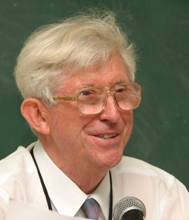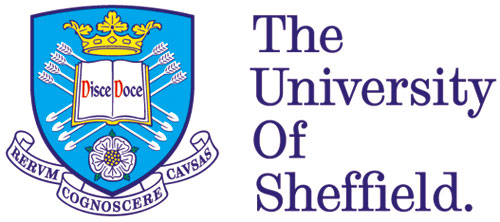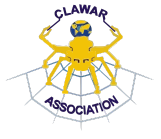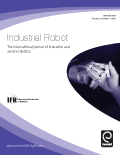
10th International Conference on Climbing and Walking Robots
The purpose of the 10th International Conference on Climbing and Walking Robots and the Support Technologies for Mobile Machines (CLAWAR2007) is to provide a venue where researchers, scientists, engineers and practitioners throughout the world can come together to present and discuss the latest achievements, future challenges and exciting applications for mobile machines in general, and climbing and walking robots in particular. In order to benefit all participants, and also to maximize the interaction, the technical program of this conference is intentionally tailored to having relatively few parallel tracks. Each track will accommodate peer-reviewed articles dealing with theoretical, experimental and applicative works. In addition to the technical program, the conference will include several keynote speakers and a common poster session.
 |
Professor Dr.-Ing. Heinz Wörn
Leiter d. Instituts für Prozessrechentechnik, Automation und Robotik
Universität Karlsruhe (TH), Karlsruhe, Germany
Talk title: From Micro to Nano and Swarm Robots Abstract: Current research in Micro, Nano and Swarm Robots and results of the European projects MINIMAN, MICRON and I-SWARM will be presented. First, the design and the control of 5 to 10 cm³ sized mobile-microrobots with five degrees of freedom will be shown.They can handle miniaturized parts as for example an optical component or a biological cell with a size in the micrometre-area with an accuracy of 100nm under a microscope or a raster-electron microscope. Second, the design and the control of a 1 cm³-sized mobile untethered microrobot will be demonstrated. Here, the robot consists of five parts: the Piezzo locomotion module, the micro control unit, the communication unit, the navigation system and the micro gripper. The mobile robot can be guided and positioned in an arena with and accuracy of 5 micrometre and can be programmed and controlled over the wireless communication unit. Third, the design and the control of 9 mm³ sized micro-/nanorobots with 3 degrees of freedom will be presented. Robots vary widely in size, design, and purpose. There are robots smaller than an O2 telephone, while there are also robots that tower above any human. Their capablities grow with each year of international research and development. They can contribute to many different professional fields, from medicine to education The transmission of energy and the communication between the robots is realized via infrared. The robot controller is fully integrated and has limited functionalities. Via basic sensors communication functions and elementary rules and behaviours the microrobot can act in a swarm consisting of hundreds and thousands of robots. Future applications could be monitoring-, inspection-, exploring-tasks etc. of big areas or objects. Principal methods for swarm control , self-organiziation and collective behaviour of such an “insect-like swarm” will be shown. |
 |
Prof. Atsuo Takanishi
Department of Mechanical Engineering
Waseda University
Japan
Talk title: Bipedal Humanoid Robotics and Its Applications Abstract: Even though the market size is still small at this moment, applied fields of robots are gradually spreading from the manufacturing industry to the others in recent years. One can now easily expect that applications of robots will expand into the first and the third industrial fields as one of the important components to support our society in the 21st century. There also raises strong anticipations in Japan that robots for the personal use will coexist with humans and provide supports such as the assistance for the housework, care of the aged and the physically handicapped, since Japan is one the fastest aging societies in the world. Consequently, humanoid robots and/or animaloid robots have been treated as subjects of robotics researches in Japan such as a research tool for human/animal science, an entertainment/mental-commit robot or an assistant/agent for humans in the human living environment. Over the last couple of years, some manufactures including famous global companies started to develop prototypes or even to sell mass production robots for the purposes mentioned above, such as SONY, TMSUK, ZMP, TOYOTA, HONDA, etc. Most of those robots have two legs for its mobility . On the other hand, Waseda University, where we belong to, has been one of the leading research sites on bipedal walking robot and humanoid robot research since the late Prof. Ichiro Kato and his colleagues started the WABOT (WAseda roBOT) Projects and developed the historical humanoid robots that are WABOT-1 and WABOT-2 done in the early 70s and 80s respectively. One of the most important aspects of our research philosophy is as follows: By constructing anthropomorphic/humanoid robots that function and behave like a human, we are attempting to develop a design method of a humanoid robot having human two legs to coexist with humans naturally and symbiotically, as well as to scientifically build not only the physical model of a human but also the mental model of it from the engineering view point. Based upon the philosophy, I and my colleagues have been doing researches on bipedal humanoid robots. In my plenary speech I will introduce the research philosophy of bipedal humanoid robotics, the design and the control of the robots and its applications collaborating with robotics companies. |
 |
Prof. John Billingsley
University of Southern Queensland
Toowoomba, Australia
Talk title: Robots Walking Down Under Abstract: A move to inland Australia meant leaving the industrial stimulus of Portsmouth, where walking robots could be sold to the nuclear industry, and concentrating more on agricultural applications. Nevertheless a ceiling runner was successfully developed here (and shown on UK TV) and research is making strides on several other walking projects. One impetus for precise vision guidance of tractors is the concept of ‘controlled traffic’, minimising the compressive ‘footprint’ of the vehicle on the growing zone. Could legged agricultural implements improve on best performance? Australian methods differ in ways that could make them more attractive than in Europe. |
 |
Prof. Bryan Bridge
Co-Director, Research Centre for Automated and Robotic NDT
Faculty of Engineering, Science and the Built Environment
London South Bank University, UK
Talk title: Climbing Robots for Nondestructive Testing: historical perspective and future trends Abstract: It is perhaps not well known that mobile robots were already deployed in Nondestructive Testing (NDT) in the early 1970’s, well before fixed robots came into use on manufacturing plant. The need for NDT robots first arose with the growth in exploitation of the world’s oil and gas supplies. Vast length of pipeline are involved in transporting these supplies from source to multiple destinations. Sediment and chemicals in the unrefined products cause rapid cause inner wall thinning from both erosion and chemical attack. Pipe rupture at just one point, anywhere along a pipe can cause a major environmental disaster so there was always a need to inspect complete lengths of long runs of pipe. The handling of inspection sensors by human operators would thus always involve vast and costly numbers of personnel. This situation begged for sensor handling by mobile robot. A second reason for robotic deployment arose from the fact that many pipelines were buried underground, under concrete or ran along the sea bed before rising to the surface (risers). Human placement of sensors is impossible in these cases. |
 |
Neville Hogan
Professor of Mechanical Engineering, and Professor of Brain & Cognitive Sciences
Massachusetts Institute of Technology,
Cambridge, MA, USA
Talk title: Biomechanics and Robotics Abstract: Robots are well on their way to becoming commonplace domestic appliances but to realize their true potential requires the perfection of contact robotics, machines that physically cooperate with humans. One pioneering application requiring close physical cooperation between robots and humans is the delivery of physiotherapy to facilitate recovery after orthopedic and especially neurological injury. However, controlling robots to interact effectively with humans presents unique challenges. A quantitative knowledge of human motor and sensory performance is important to optimize machines for human contact. I will briefly review our success with robotic treatment of upper-limb motor disorders and how it has profited from the availability of relatively detailed quantitative knowledge of unimpaired biomechanics and neural control of arm movement. Robotic treatment of lower-limb motor disorders presents unique challenges as the control of locomotion is substantially more difficult and less well understood. On the engineering side, locomotion presents far greater challenges than arm movement. The dynamic process is fundamentally nonlinear, including prominent discontinuities. It is a hybrid dynamic system, switching between regimes governed by different dynamic equations. Add to these the paramount challenge of safely managing physical contact and interaction with frail human subjects. On the biological side, the relative importance of centrally-specified limb trajectories and semi-autonomous peripheral neural oscillators such as the putative locomotor pattern generator remains unclear. Furthermore, while dynamics is largely subordinated to kinematic goals in upper-limb motor behavior, musculo-skeletal mechanics appears to play a central role in controlling the lower limbs. However, the relative importance of musculo-skeletal mechanics suggests that minimal actuation may provide substantial control authority; motors at every joint are almost certainly unnecessary. While this has obvious advantages for minimally-encumbering machine design, it makes the control problem even more difficult as the system is underactuated. I will discuss our initial investigations of the feasibility of controlling locomotion and assisting its recovery using distal actuation, in particular a two degree-of-freedom robot interacting with the ankle. |
| Prof. Dr. Steven Dubowsky
Field and Space Robotics Laboratory, Room 3-469
Massachusetts Institute of Technology
Cambridge, MA 02139, USA
Talk title: A Road from Walking Machines to Surgical Robots: Digital Mechatronics Abstract: Digital mechatronic devices approximate the motion of continuous mechanisms by using a larger numbers of binary Degrees-of-Freedom. Digital mechatronic devices have excellent repeatability, are reliable, robust and are simple to control. Artificial muscle actuators that are made of elastomers are ideally suited digital mechatronic devices. These actuators have unique properties such as very large strain and large forces. They are light and inexpensive. In the work presented here digital mechatronic systems were first considered for planetary exploration walking robots. This study has lead to the development of surgical robots that can function effectively inside of MRI systems with important medical benefits. |
Clawar Association
International Journal of Humanoid Robotics
International Journal of Industrial Robot
Email: clawar2007 AT ntu DOT edu DOT sg










